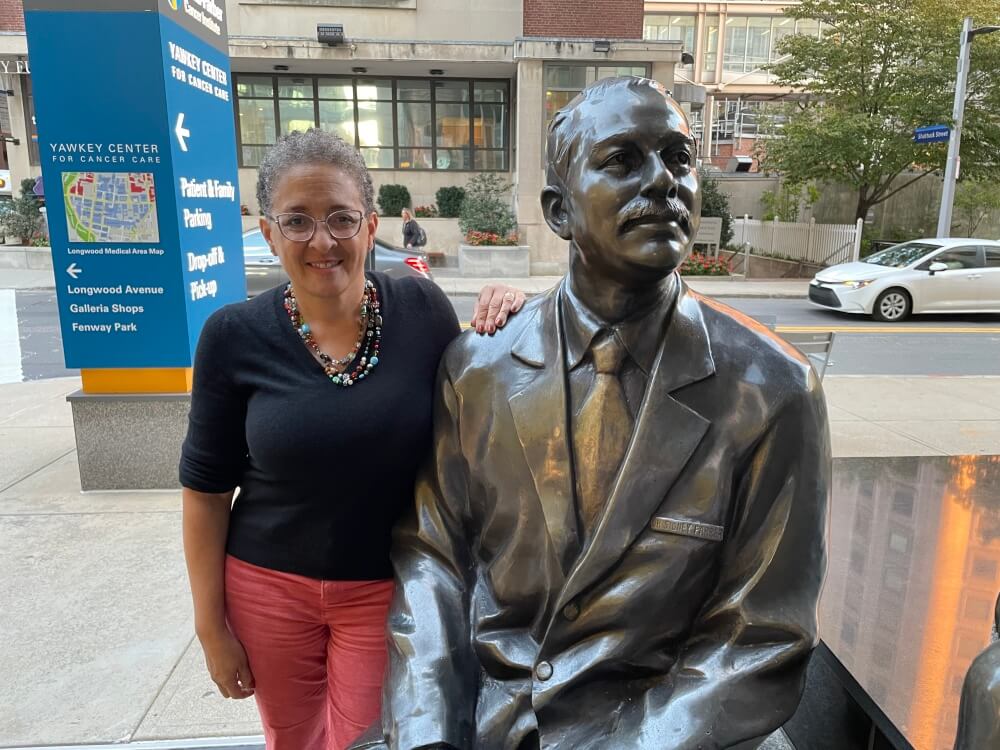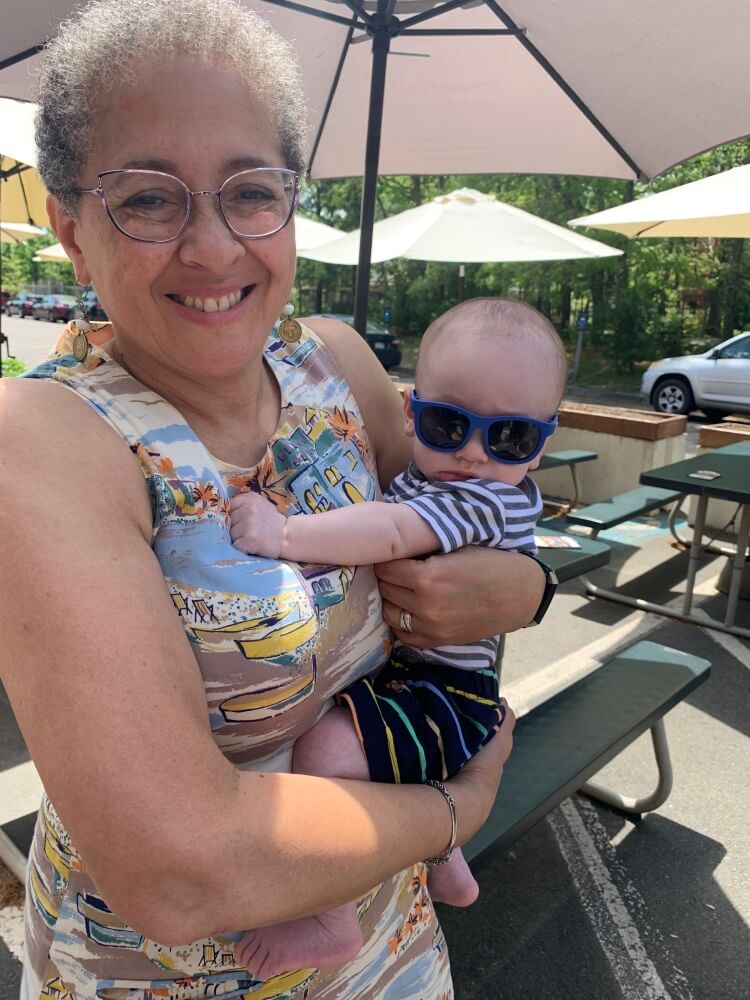Patti Keenan was a senior in high school before learning that the mysterious disease she was treated for twice as a young girl in the 60s was, in fact, a rare form of cancer. Her parents, not wanting to frighten Patti at a time when pediatric cancer survival rates were much lower, kept their daughter’s diagnosis of a neurofibrosarcoma — a tumor in her chest — a secret.
“All I knew was that we were going to Boston Children’s Hospital,” recalls Keenan. “My parents would take me up to the Jimmy Fund Clinic through the basement of Children’s, which was right next door.”
Decades later, in 2003, Keenan was diagnosed with dermatofibrosarcoma protuberans, a rare soft tissue tumor. This time, she was the first to know — but was in for another big surprise.
“I was at Dana-Farber for treatment, and asked to see my childhood pathology records,” explains Keenan. “They handed me this big folder, and I saw one name typed on a lot of the notes: Sidney Farber, MD. I couldn’t believe it.”

While Keenan was too young in the 60s to remember Farber’s days as her doctor, by 2003 she was familiar with the “Father of Modern Chemotherapy.” Farber achieved the first temporary remissions in pediatric leukemia patients in 1947, the same year he founded the cancer center that bears his name. But many of his patients, especially those like Keenan who relapsed, did not reach adulthood.

Ever cognizant of her good fortune as a three-time survivor, Keenan, who is cancer-free today, has spent her professional and personal life helping others. In addition to working at various nonprofit agencies, she has served on numerous Dana-Farber committees. She has also named the Institute as a beneficiary of her employer-provided life insurance policy.
“I felt lucky to be alive, and wanted to give back,” says Keenan of her childhood treatment, which required surgical resection of a tumor in her chest, along with her right pectoral muscle. “I thought I might become a doctor, but I wasn’t really a science and math person, so I went into nonprofit.”
The medical career was left to the next generation. Keenan married her college sweetheart, Matt, with whom she raised their children, Walker, Xavier, and Alexandra. Walker showed an interest in medicine and worked in Dana-Farber research labs for several summers through the Continuing Umbrella of Research Experiences (CURE) program, which introduces Massachusetts high school and college students from underrepresented populations to medical research and jobs at Dana-Farber/Harvard Cancer Center institutions. Today, he is a pediatric psychiatrist.

There were no psychiatrists for families of cancer patients when Keenan was diagnosed, which is one of many advances she’s seen since her initial treatment. Her earliest surgeries included a radical mastectomy when she was 5-years-old, which required her to wear makeshift prostheses made from her father’s handkerchiefs as a teenager. After her 2003 diagnosis, she had a second mastectomy, this time with a reconstruction that perfectly matched her skin tone.
“I can laugh about it today, but it was very traumatic thing for a young girl.” Keenan says. “The advances have just been incredible.”
But during a recent visit to Dana-Farber, where she still is cared for at the Perini Family Survivors’ Center, Keenan expressed appreciation for what has not changed. The Jimmy Fund Building, which housed the original Jimmy Fund Clinic where she was treated as a child, remains, and some of the Disney© frescoes she remembered from the old clinic were moved to its new location in the Dana Building.
“The care is the same too,” remarks Keenan, now a grandmother. “It was a really difficult time in my life, but the people here were all wonderful. They still are.”

It never dawned on me until just now as she spoke about the Jimmy Fund Building, on March 15 1980 I interviewed in offices on the first floor. Shiny black marble columns here and there. It must have been the lobby entrance she used behind those glass windows behind her in the photo. The brick Fredericka building where the Smith building now stands was another classic as well as Mort Lederman who had lunch at the picnic tables every sunny day. Mort was Dr Farber’s driver who became head of General Services.